Simians, Cyborgs and Women Chapters 6-10

Chapter 6: Reading Buchi Emecheta : Contests for ‘Women’s experience in Women Studies’
This is all about the role of fiction works in women studies. The emergence of feminist theme in fiction works are in the spotlight. The author focuses on how many types of fiction explore how it showcases the the fight between traditional and modern for women, she gives a bibliographical account of an author who went to college, raised a family and struggled financially and still managed to write her novels. This side note in between discussing the texts, has relevancy to the telling of her experience. Having children is a traditional role for women and having five as the woman in the story does, is quite significant. The fact that she is going to school and working while doing this is a modern idea. That was unheard of in the traditional era, particularly the 1950s conservative idealism of the put together Leave it Beaver stay a home mother, who is perfect in every way.
Chapter 7: Gender for the Marxist Dictionary:The Sexual Politics of a Word
This video is a study into what gender is. It is 13 minutes and definitely worth the watch. It is very relevant to the discussion in this chapter about the profile of a word and how society has shaped it. The people explore the identity aspects and the social parameters of "gender".
What’s in a word? I remember us reading that article regarding how word have different usages and meanings in different contexts. It is ever more true in the sense of the political battle of the word GENDER.
The author gives a history of the word starting with what it is in other languages
- Gender- English
- Geschlecht- German
- Genre-French
- Genero-Spanish
The English and German variations hold meanings more relevant to sex, sexuality and differences. The idea of a gender identity paradigm came about in the 1960s with research into social gender versus sexual gender. Author, Audre Lorde quoted in 1986 speaking about female differences within their own sex and how that establishes social gender differences, “Being women together was not enough. We were different. Being gay-girls together was not enough. We were different. Being Black together was not enough. We were different. Being Black women together was not enough. We were different…It was a while before we came to realize that our place the very house of difference than the security of any one particular difference (qtd. Lorde, 1982, p.226).
Different. We were Different. That is her main statement in that quote. The difference amongst a category that society has so seamlessly identified as just male or female was large.
That time period brought about the sex-gender system from Rubin where patriarchy was viewed in context of a material system. The system that allows men to work together and “dominate” women.
There are three elements of gender mentioned in The Science Question in Feminism from 1986. The elements are:
- Meaning is ascribed to everything
- Organize social relations
- Structure personal identity

You get a sense for how the elements are incorporated into our society. The meaning behind our gender is ascribed to everything about our lives. The fact that parents to be get bought dresses, bows, ribbons, and pink items for the arrival of a baby girl shows what meaning “girl” has to our society. Socialization is the same way. Boys are traditionally taught to be strong, and fight like a man. Girls are traditionally taught to be delicate and graceful. The roles are ascribed through social relations, but they aren’t inherit in the people. Personal identity is one that has gotten more attention in recent years involving the transgender community. Those who are born a sex, but feel personally that they are the opposite. That is a personal identity gender role. The difference between sex and gender through each of these can be seen in the establishment ofa societal context, because non-American countries would have different examples.
The author provides a good comparison between feminist theory and Marxist theory with:
Sexuality is to Feminism what work is to Marxism
The closing statements are in regard to the idea that there is an “imaginary ” narrative involving sex and race. The social sex/gender system is breaking down the walls of the old perspective.

Chapter 8: A Cyborg Manifesto: Science, Technology and the Socialist Feminism in the Late Twentieth Century
This is a hefty chapters in which the author builds her discussion about the Cyborg-“Ironic political myth faithful to feminism, socialism and materialism(). A cyborg historically and in science fiction is a hybrid creature from a living organism and a machine. I realized the difference between an android and a cyborg is that androids are specifically human in nature, whereas cyborgs just need some organism aspect animal or human as a part of their creation. This was side not that I researched, because I am a fan of the Alien films and I was thinking in regards to Bishop.
The author discusses contemporary science with cyborgs the incorporation of them into our society especially in medicine and replication practices.
The question is then posed- What counts as nature? You have the animal/human part with a machine. Is that nature since part of it is organic? Is it not nature, because it is man-made? Does genetic engineerin
g fall under the same category? Those are questions I thought of as she was discussing this.
Social political discussion of the nature of changes in the social system involving world order and the scope of technology. The changes are on class, gender and race. As gender has been previously discussed.
A change in jobs should happen in which jobs are shifted to be none gender specific. Jobs typically held by females will include more males and vice versa. This is expanding the economic system.
Networking with technology breaks down barriers for women. The information age has changed so much in the way of perspective when it comes to feminism. Many people do not view it as crazy women burning their bras anymore, because they are able to research it online and see what most feminists think.
Summary: “Cyborg identity allows greater freedom to escape the conceptual framework of the world”

Chapter 9: Simulated Knowledges : The Science Question in Feminism and the Privilege of Partial Perspective
This chapter is the argument that science as it is presented is used a means to shape the perspective of the world. The author believes that it should not be seen as a force that is above all,but rather an encompassing approach that filters perspectives and knowledge to form a wider view.
“Objectivity is not about disengagement” she argues that it is about restructuring the world through other views. This aligns with the idea that feminists want the objective knowledge and how it is related back to her previous discussions.
Chapter 10: The Bio Politics of Post Modern Bodies
This is a chapter that the author spends developing a comparison of the biological sciences and social sciences. Using the example of the body immune system she establishes the sickness and weakening of the system from the lack of knowledge. The interpretation of a system where people are able to interact with all types of people in complex ways just like the body is able to work in a complex world of various hazards.
She is establishing a support for her cyborg ideology where the body is organic operating systematically in a technical world. The relationship that we have with the world should be cohesive and remain contemplative about the knowledge being presented.
Closing thoughts….
I could follow this fine. I think a lot make sense in the comparisons she makes. I especially thought the discussion in Chapter 7 is important to how we perceive words. This reminds me of the political correct movement where we are really focusing on specific words and how they are being used and perceived. One person could use gender in the right context and another person could think of it solely as male vs. female.
Haraway, D. J. (1991). Simians, Cyborgs, and Women: The Reinvention of Nature. New York: Routledge.
Non-Designers Design Book Chapters 1-4
Chapter 1: The Joshua Tree Ephiphany
Introduces the four principles of design-
- Contrast
- Creates a sense of style on the page to avoid a monotonous look. Establishes difference
- Repetition
- Establishes pattern
- Creates organization and uniformity
- Alignment
- Creates a clean look
- Avoids messy appearance
- Proximity
- Creates organization
- Makes reading easier
Chapter 2: Proximity
Related things are placed together on a page. The idea is to organize not use space. You shouldn’t put things in a place just to take up space. The space should make sense for the content. That is close to one another should be relevant and grouped so.
Chapter 3: Alignment
Robin’s Principle of Alignment: “Nothing should be placed on the page arbitrarily. Every item should have a visual connection with something else on the page” (33).
This is creates a unit when things are organized neatly on a page in a manner that matches. A page would look off if say my text did this…
So I am going to talk about penguins Penguins are so cool. They live in cold environments. And they mate for life.- They cannot fly
The obvious state of this is that it is hard to follow. I do have an order that I am typing my information, but its all over the place with different alignments. It just takes away from the unity of my text. Alignment is important for making things stand out from the rest. This is why we center our titles.
Penguins So I am going to talk about penguins. Penguins are so cool. They live in cold environments. And they mate for life. They cannot fly and they eat fish.You can tell from this that Penguins is my title because it is centered and the body text is all the same alignment.
Chapter 4: Repetition
Repetition is how we form our pattern and style. Word Press is a great example of repetition. I picked my theme because it repeated the same color trends, the same font styles, and the same structure throughout the theme that appealed to me. It would look off if it had different fonts, wacky colors and different patterns on top of each other. There needs to be some cohesiveness to establish a pattern for your design.
Williams, R. (2008). The Non-Designer’s Design Book: Design and Typographic Principles for the Visual Novice (3 ed.). Berkeley: Peach Pit Press.
I commented on Sarah Camp’s and Ramona Meyer’s posts.
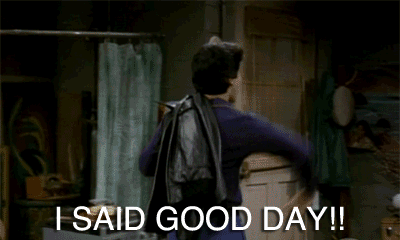
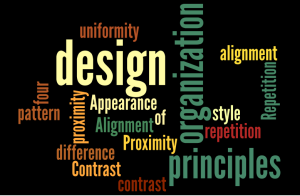
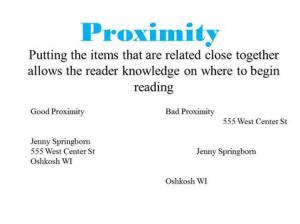
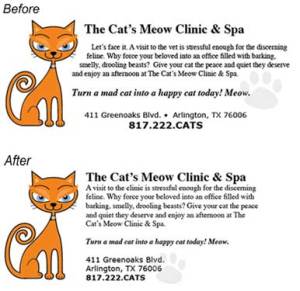
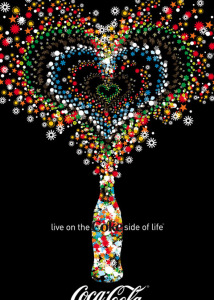
Hey Sarah, this is a nice break down of the second half of Haraway’s book, and the pictures you include enhance the pieces of text to which you are drawing attention. I am curious, though, if you see the trends of cyborg feminism and bio politics of the postmodern humans connected to your interests in horror movies. Are characters in horror films depicted as post modern bodies? Gender stereotypes are prevalent in the horror genre, but what about the characters like those in rape-revenge films who transform during their experiences?
I am so glad you brought that up! I have done a lot of research for fun in the meanings behind horror social commentary. There are a lot of feminism under tones in films. I think as stereotypical as many films portray teens and male/female, race and other roles as they have something that really stands out. The main character that typically survives is usually a woman/girl. She may start off timid, and scared but as you said she transforms. It is obvious in the rape-revenge films, because they go through a traumatic experience and they usually turn out and complete more violent acts against the men who attacked them- thinking I Spit on Your Grave. But just the general slasher films find strong women who can hold their own and survive this villain that is killing everyone else off around them. I still that is something that I have noticed so much, because the strong guy (mostly a jock in high school setting) is killed off due to his lack of caution. So the strong male stereotype isn’t a win in the end. So I do see the correlations in a lot more films than I would have previously thought, because really looking into it.
Thank you for finding and sharing design examples with the rest of the class.